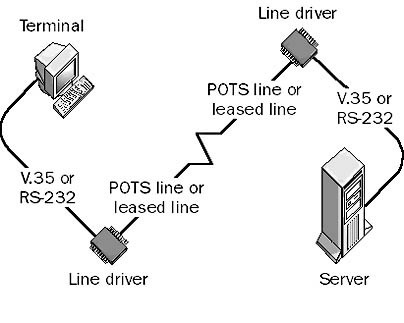Definition of LINE DRIVER in Network Encyclopedia.
What is Line Driver?
Line Driver is a device that can use installed twisted-pair phone lines or leased lines to connect terminals to servers in different parts of a building or in different buildings.
A line driver is essentially a combination of a signal converter and an amplifier for digital signals. The signal converter performs line conditioning, and the amplifier increases the signal strength.
Also called a “short-haul” device, a line driver allows a signal produced by a serial transmission device using an interface such as RS-232 to be carried over a longer distance than the interface standard allows, which for RS-232 is only 15 meters.
How it works
Line drivers are always used in pairs. One line driver is placed at the local site and is connected to the terminal, while the other is located at the remote site and is connected to the server. Line drivers are typically used to extend the maximum distance of serial communication protocols such as RS-232, V.35, X.21, and G.703 and can provide either synchronous or asynchronous communication in various vendor implementations. Considerations for line driver type include full-duplex or half-duplex communication, 2-wire or 4-wire cabling options, and various kinds of connectors.
The most common type of line driver uses an RS-232 serial interface for synchronous transmission of data over installed 4-wire telephone cabling. These line drivers can extend the maximum distance of RS-232 serial transmission from 15 meters to several kilometers.
For intrabuilding connections using line drivers, copper unshielded twisted-pair cabling or the installed telephone lines are typically used. For interbuilding connections, fiber-optic cabling is preferred.

NOTE
Line drivers are available for almost every kind of communication mode, from 19.2-Kbps RS-232 serial line drivers over 6 kilometers to 2-Mbps single-mode fiber-optic line drivers over 18 kilometers. Line drivers for parallel connections can extend parallel transmission of data from about 6 meters to several kilometers. Line drivers are also used in implementation of T1 lines.
TIP
When you use line drivers, your maximum bandwidth and transmission distance are inversely related – that is, the longer the line, the less bandwidth you have.
For connecting data terminal equipment (DTE) such as two computers, you should use a modem eliminator instead.